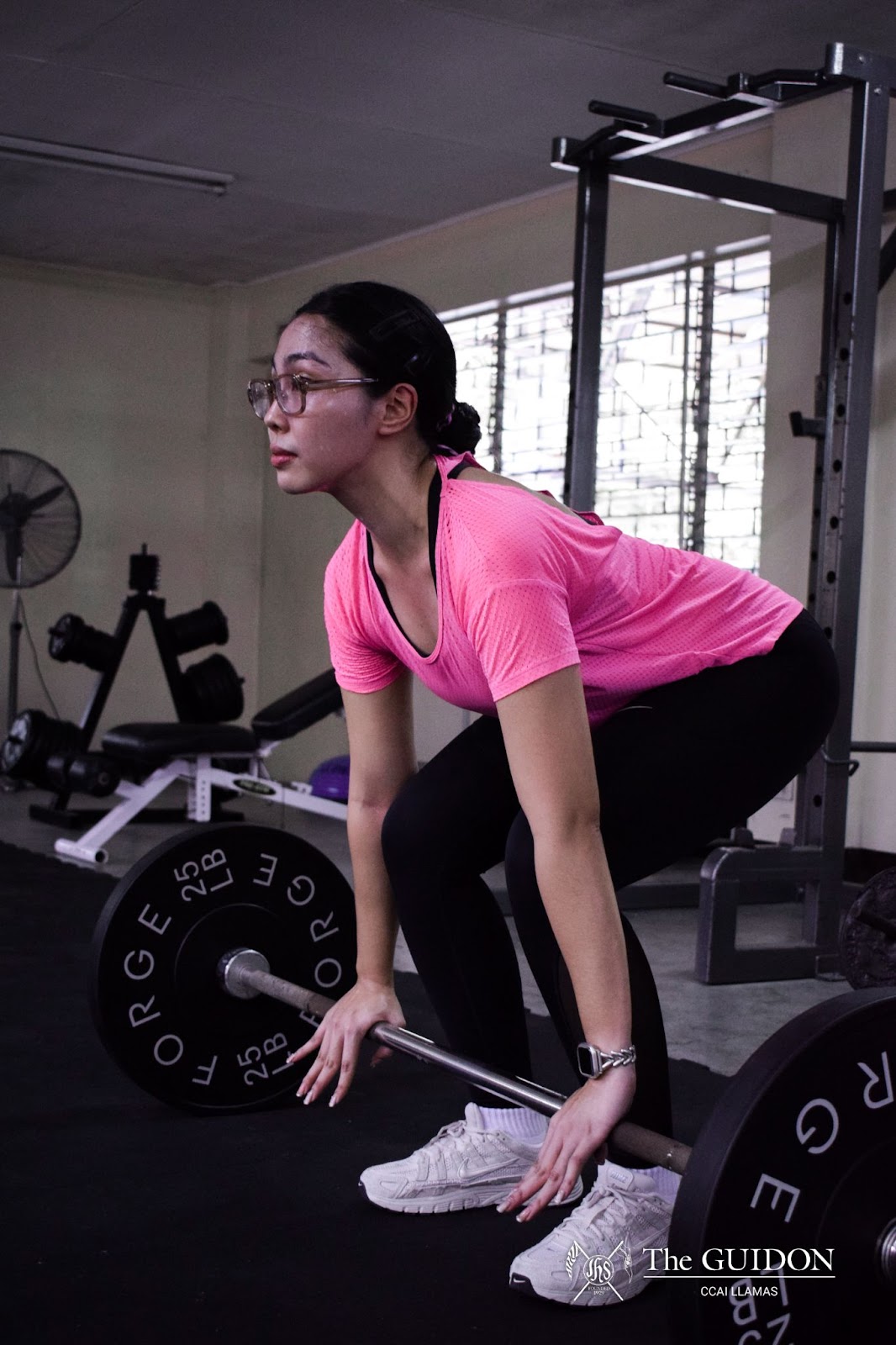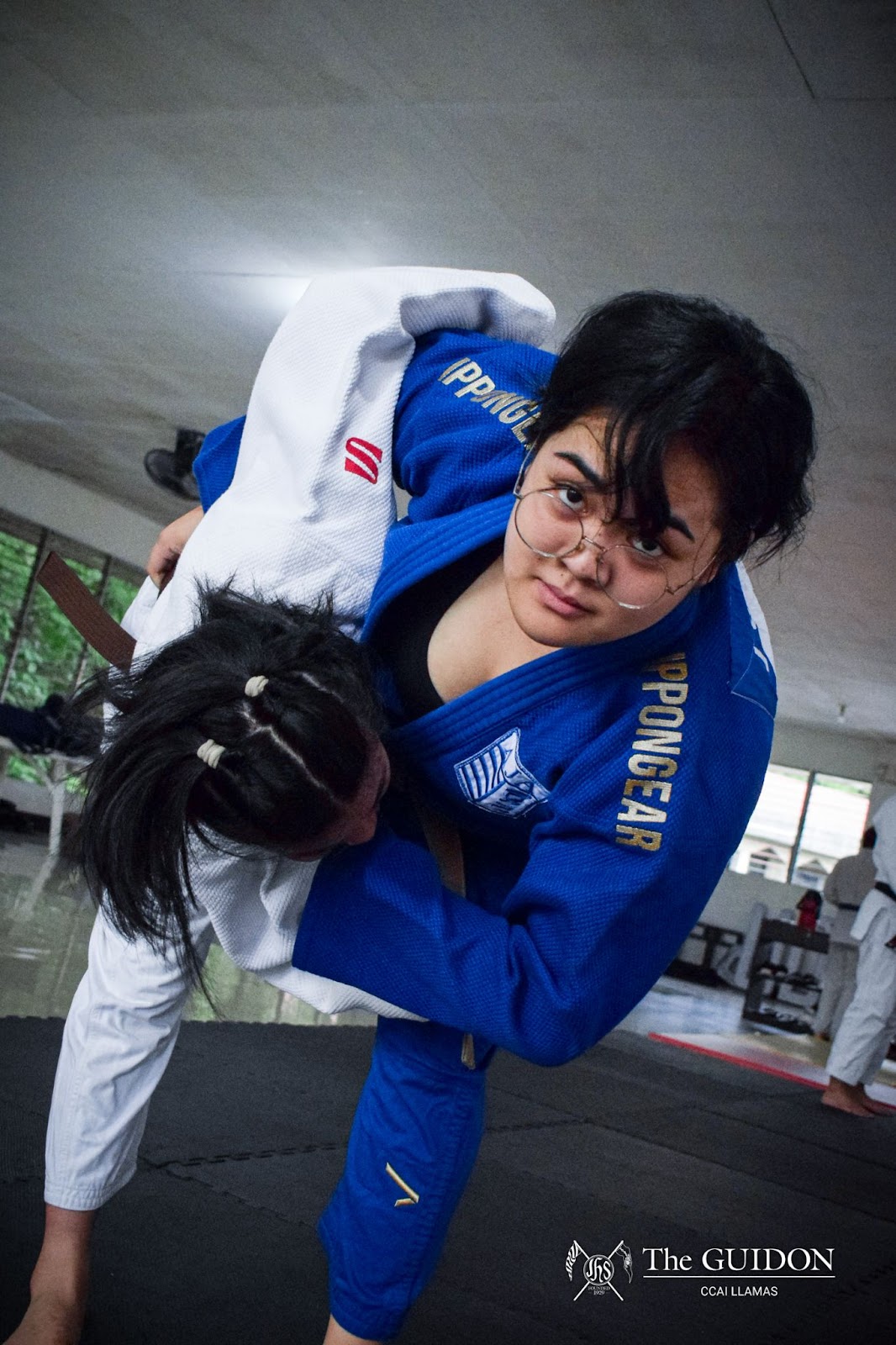WOMEN DO pilates, yoga, or strictly cardio, while men lift weights—at least that is the stereotype. For years, weightlifting has been seen as a man’s sport, with gym culture reinforcing the idea that strength belongs to men while gentleness is for women.
Societal expectations for women in strength training extend beyond common sexist stereotypes, embedding deeper stigmas that limit feminine participation and opportunities. Myths about weightlifting seep deep into the world of fitness, which refers to the sport as too masculine, bulky, and dangerous for women. Amid this, female weightlifters continue to penetrate these stereotypes with determination, despite the fact that society has instilled fear among women from weightlifting.
Ateneo in particular has empowered a community of women to harness their strength, from student leaders to athletes and professors. Their participation in the sport emphasizes how times are changing and barriers are breaking—proving that strength knows no gender.
Powering through stereotypes

Gyms have always been perceived as a man’s playground, often accompanied by an expectation for women to be the “weaker sex.” The stigma that women will struggle to participate in fitness-related activities, most especially weightlifting, remains ever present in modern times despite ongoing efforts to challenge these harmful misconceptions.
Comments that seem harmless travel farther down the surface, especially for women with a passion for fitness. These sentiments affect their confidence, leading them to question their abilities and worth in the gym. Nina Lim (4 AB PSY), the Vice President of the Association of Lifters and Bodybuilders and Chairperson of the Ateneo Sports Coalition, reveals that remarks such as “you might break your back” are often directed at her and other women in the gym. These kinds of comments typically aimed at women who simply want to lift dumbbells carry an underlying tone of doubt in their capability.
Because of societal standards, women may also begin to view their bodies more critically rather than their health and personal goals in mind. The environment around them can feel unsupportive, fostering a sense of isolation and feelings of inferiority in spaces where they should feel empowered.
Nina also shares that people would comment so freely on her body as if it were their own. According to her, negative remarks from her own family—such as “it is not normal for women” and “you will look like a man”—shoot her athletic aspirations down and produce a toxic environment that rejects a change in the system.
Underlying these comments is the myth that bulkiness is considered unhealthy, making female weightlifters an abnormality in male-dominated gym spaces. A common misconception is that women will bulk up like men through weightlifting, but in reality, this couldn’t be further from the truth.
Member of the Ateneo Judo Team and Fitness Improvement Team (FIT) Juliana San Ramon (3 AB DS) emphasizes that you will not look like a roided-out athlete. According to her, females retain fat differently compared to men and typically tone down rather than get big. She notes that at the end of the day, these choices of hitting the gym should come from choosing healthy choices rather than conforming to beauty standards.
Furthermore, the myth that women should not workout on their period can be tied to the negative perceptions of that time of the month when women are seen as moody or incapable of physical movement. Coach Katya, a Physical Training for Women Lecturer, points out that it is perfectly okay to lift weights on your period, and it can even act as a treatment for cramps. During the follicular phase of a menstrual cycle, where estrogen levels are at their highest, lifting could help improve muscle mass and tone.
Society continues to reinforce and extend these myths, even extending them to pregnant women, with the presumption that they cannot lift. However, Coach Katya highlights that lifting in pregnancy is actually safe with clearance and approval from a doctor. Healthline supports this claim and adds that it may offer benefits, such as reducing back pain and promoting healthy development for the baby.
As more women push back against these stereotypes and claim their space in fitness, the reality of their experiences in the gym reveals both the progress and lingering challenges for female weightlifters. Understanding how these myths clash with reality in these settings is essential for shifting gym culture toward true inclusivity.
Strong women, stronger lifts

Unsolicited societal expectations toward women in fitness often shape how they approach the sport; however, Coach Katya’s professional weightlifting experience puts things into perspective for beginner weightlifters.
She points out that women are just as capable of lifting heavy as men when their training is customized to their unique strengths. Since women generally excel in cardio and endurance, these qualities can serve as significant advantages in weightlifting.
Ultimately, fitness about how you approach it, beginning with a clear goal in mind. It is not about quick transformations but a long-term commitment toward health—both physical and mental. “The reality is, you won’t get those results without proper nutrition, consistency, and dedication,” Nina says, reflecting on her journey.
From the start, Nina already had a vision for herself, and strength training became her path to achieving it. It helped her confront the body insecurities she struggled with in her youth when many around her equated being “big” with something inherently negative.
For female athletes in fitness, having a “big” physique is an insecurity that often leads women to underestimate their athletic potential. Julianna challenges the fear that their size will be seen as a barrier to both femininity and athletic performance. “Many associate sports with masculinity, but being strong or participating in sports doesn’t take away your femininity,” Julianna emphasizes. After all, strength and grace are not mutually exclusive; rather, they work together to broaden the definition of womanhood.
Gym culture confronts women with presumptions men never have to endure. The expectation that women are soft and fragile is outdated, with women in positions of knowledge and experience exposing the truths and unabashed experiences of female fitness. Yet despite these truths, many still choose to uphold outdated biases, undermining their place in strength training. Some people still choose to discriminate, only listening to their own biases and narratives.
Despite these barriers, female weightlifters continue to push forward. “It is not hard to get into (the gym), but the social implications make it hard to stay,” Nina stresses.
The fight for equality in the gym is not just about access—it’s about recognition, respect, and the freedom to train without limitations.
Strong is the new beautiful

The reality of toxic gym culture and fitness is a difficult weight for women to conquer. Nevertheless, these burdens can still be lifted, all with the help of a little push and a dose of motivation!
Coach Katya advises to simply show up as the best way to learn is to start moving. She goes on to say that it’s also beneficial to research a lot on strength training and manage one’s time through proper scheduling. “Health is our multiplier,” she states.
Moreover, physical activity helps us become healthier versions of ourselves and it’s best to start as young as we are now. “You can’t hate yourself enough to change, but you can love yourself enough to grow,” Nina mentions, concluding that one’s fitness journey cannot ever be lost if one loves oneself enough to start and keep going despite the difficulties.
When women are subjected to criticism alone, weightlifting and fitness can become much more difficult. This is why Julianna acknowledges the significance of finding solidarity within the community. She further shares how she found a system of support among her Judo teammates as they worked together to increase female representation in a male-dominated sport.
Julianna also emphasizes not always expecting to be the best, noting that a woman’s body and mind function and work differently. She reminds fellow women to be kinder to themselves, allow themselves to have those days of struggle and low energy, as well asto continuously prioritize their health.
Coach Katya, Nina Lim, and Juliana San Ramon emphasize the necessity of perseverance in beginning a strength training journey and putting in our best effort, but women can’t do it without each other’s support. The fitness community as a whole must continue to make efforts to break down these barriers in strength training and foster a safe space in the gym so that all women can become strongHER together, one rep at a time.






